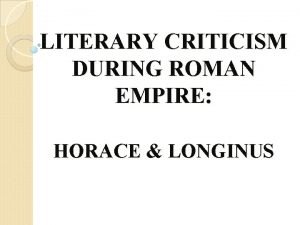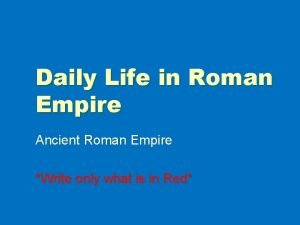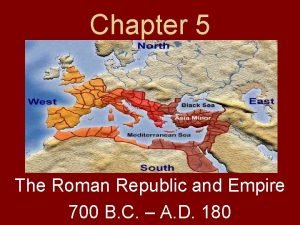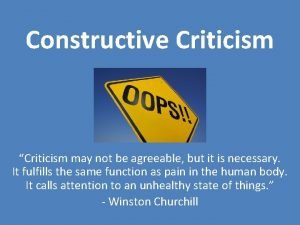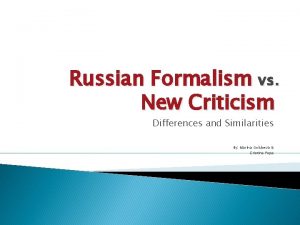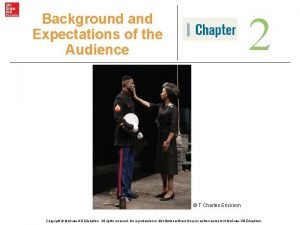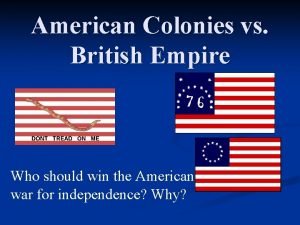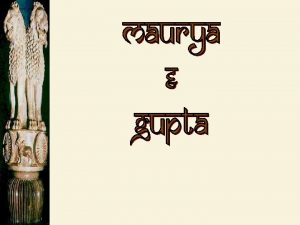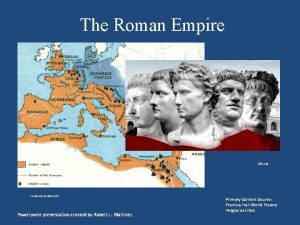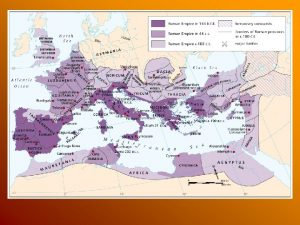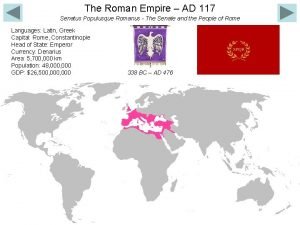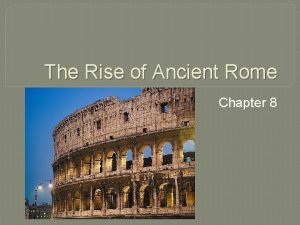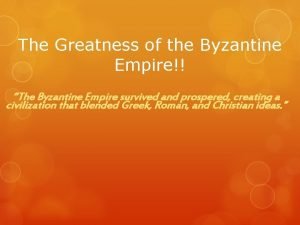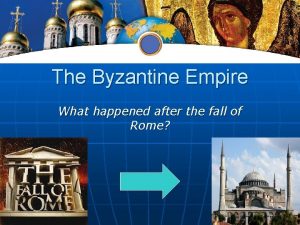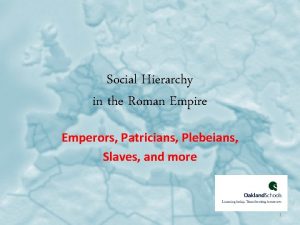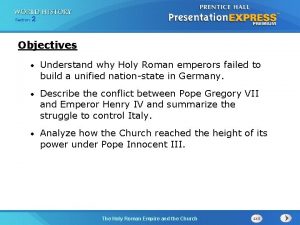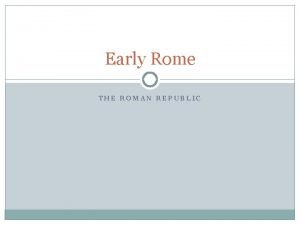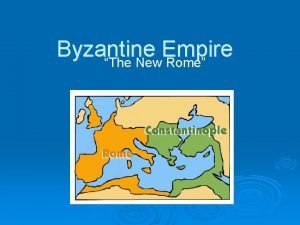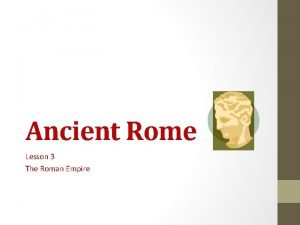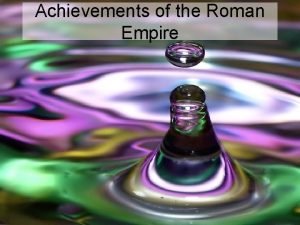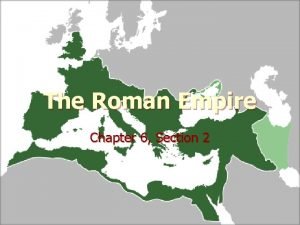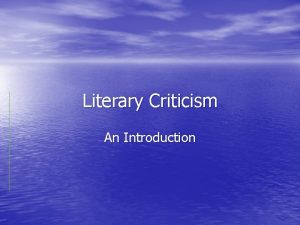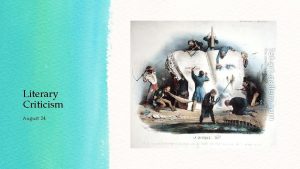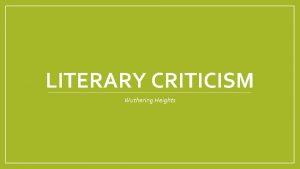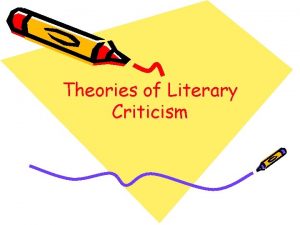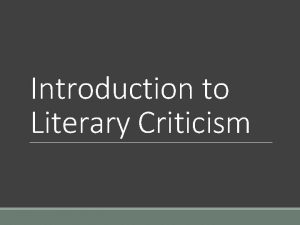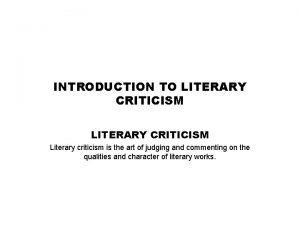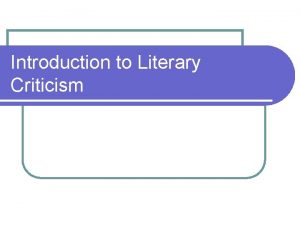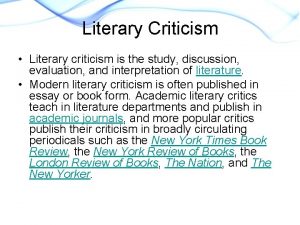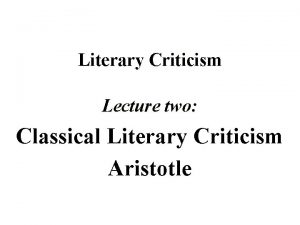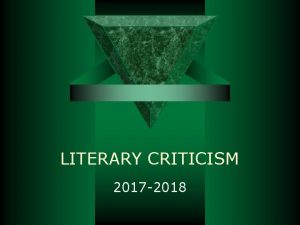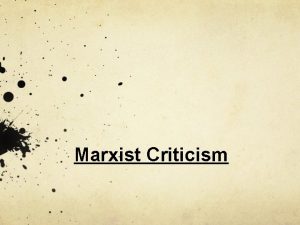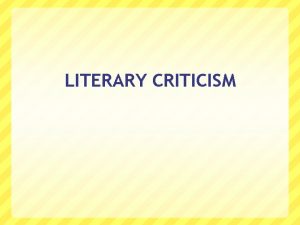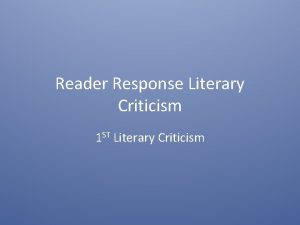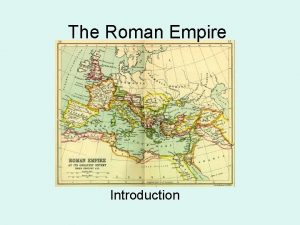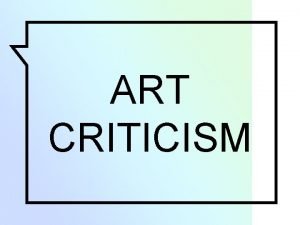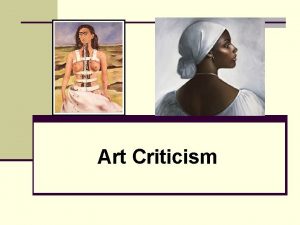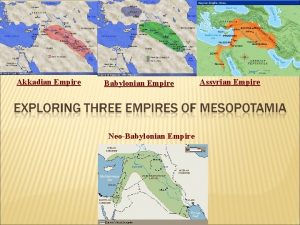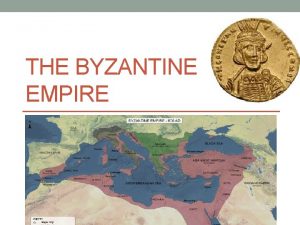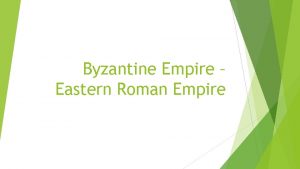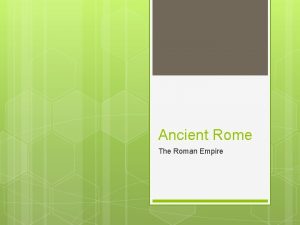LITERARY CRITICISM DURING ROMAN EMPIRE HORACE LONGINUS Introduction



























- Slides: 27

LITERARY CRITICISM DURING ROMAN EMPIRE: HORACE & LONGINUS

Introduction Plato and Aristotle are succeeded by a number of Roman literary critics. There are some who expand upon Plato’s and Aristotle’s thought, such as Plotinus. There are others who strive to study other aspects of literature, such as Horace and Longinus, whose works concern aspects of literature not yet described by Plato and Aristotle. The Fourth Lecture 2

Horace (Quintus Horatius Flaccus) is more interested in the notions that: 1. 2. 3. “A poem is like a painting. ” In poetry, words are like various colours that are put beautifully. Poetry should “teach and delight, ” Poetry is a craft which requires labour. His most influential work remains Ars Poetica (The Art of Poetry). Horace’s text takes the form of an informal letter from an established poet giving advice to the would -be poets of the wealthy Piso family in Rome. The Ars poetica is written as a poem. The Fourth Lecture 3

Horace’s text can be seen as focused on the following issues: 1. 2. 3. 4. the relation of a writer to his work, his knowledge of tradition, and his own ability; the moral and social functions of poetry “to teach and delight”; the contribution of an audience to the composition of poetry, viewed both as an art and as a commodity; an awareness of literary history and historical change in language and genre. These principles claim to be drawn from practical experience rather than theory. The Fourth Lecture 4

Horace’s Theory of Imitation Horace’s theory of imitation differs from that of Plato and Aristotle. It recognizes the importance of copying nature. But, it emphasizes imitation of the methods of the great classical writers. Unlike Plato, who had regarded the poet as necessarily distorting reality by offering a mere imitation of it, Horace sees poetry as a repository of social and religious wisdom. “The principal fountainhead of writing correctly is wisdom”. The Fourth Lecture 5

Horace’s Theory of Imitation In the depiction of character, the poet must be aware of the various characteristics of men from childhood, youth, and manhood to old age. Hence, the poet’s work must be based on knowledge; not bookish knowledge but a detailed empirical knowledge derived from acute observation of actual life. “My instruction would be to examine the model of human life and manners as an informed copyist and to elicit from it a speech that lives”. The Fourth Lecture 6

The Functions of Poetry Horace stresses the moral and social functions of poetry. for him, Poetry establishes a repository of conventional wisdom. It provides moral examples through characterization It promotes civic virtue and sensibility. Horace focuses on the moral function of literature. In drama, for example, the depiction of good character is indispensable. This function, he says, should be effected partly by the chorus. The Fourth Lecture 7

The Functions of Poetry according to Horace, poetry should afford pleasure as well. In a famous statement, Horace remarks that a poet should mingle the useful with the pleasant [miscuit utile dulci], by charming and, not less, advising the reader. The Fourth Lecture 8

Horace: Artist as a Craftsman Horace stresses the amount of labour required for composing good poetry. Part of this labour is seeking out valid criticism of one’s work from sincere and qualified people. Horace admonishes the poet to store his work away for nine years. He warns that, once a poem is published, the words used by the poet will forever become public property: “it will be permissible to destroy what you have not published: the voice once sent forth cannot return”. The Fourth Lecture 9

Horace: Artist as a Craftsman It is the writer's business to refine and polish his text that the highest standards of propriety and artistry are maintained. However, Horace demands a craft man’s skill in an artist; he does not utterly neglect the role of natural talent in art. In fact, he is insisting on a complementary relationship between learned artistry and genius. The Fourth Lecture 10

Horace: Decorum For Horace, decorum calls for a “proper” relationship between form and content, expression and thought, style and subject matter, diction and character. A writer must choose a subject within his power and appropriate to his gifts; He must say at any given moment what needs to be said, and no more. He must choose vocabulary, meter and form that are right for his subject, whether noble, exciting, or joyous. The Fourth Lecture 11

The Rules of Decorum Horace outlines the following rules of decorum to be in good poetry so that the pragmatic effect of poetry (Teach and delight) can be achieved: Form and content matched Appropriate use of Diction Appropriateness of meter Consistency of characters Style (Starting and ending) The Fourth Lecture 12

The Rules of Decorum 1. Form and content matched: ◦ The style should be proper. ◦ By proper, he means that the trivial matters should not be written in grand style. ◦ And in the same way, the treatment of serious matter should not be in trivial form. ◦ Therefore, from and content should be matched. ◦ Poets and painters should not create monotony by showing dolphin in the forest and elephant in the sea. ◦ Such unnatural combination fails to teach and give the delight. The Fourth Lecture 13

The Rules of Decorum 2. Appropriate use of words: ◦ The words come and go like the leaves of a tree. ◦ The words need to be used in proper places according to the nature of the words. ◦ Cliché should not be used and the language of common people should be magnified. ◦ Poets should use familiar words in quite different way. ◦ If characters want to speak words then it is okay but it should have its origin in Greek. The Fourth Lecture 14

The Rules of Decorum 3. Appropriateness of meter: ◦ Horace prefers Virgil's opinion that to follow Homer is to follow nature. ◦ Homer says it is appropriate to use hexameter in epic, iambic pentameter in tragedy and hexameter and iambic pentameter in elegy. The Fourth Lecture 15

The Rules of Decorum 4. Consistency of characters: ◦ The characters should be consistent and life like. ◦ His views on characters are identical to Aristotle. ◦ Character traits should be based on age, there should not be any exaggeration, that is which is not possible to the character must not be presented. ◦ Therefore, characters should be convincing, probable and consistent. The Fourth Lecture 16

The Rules of Decorum 5. Style (Starting and ending): ◦ The writer can take one of the following techniques to present the content: Prolepsis (flash back): What happened before the action takes place. Analepsis (foreshadowing): What happens next to ongoing action. Anachronistic (random): Mixture of all techniques. The Fourth Lecture 17

The Rules of Decorum Whatever the technique there is, the end of poetry should teach and delight. To teach, actions should be physical than verbal because whatever people see, they are likely to believe. Therefore, it is better to perform everything. But scenes of murder, violence etc. should not be shown on the stage. Deus ex machina (God from the machine) is to be hidden. The Fourth Lecture 18

Longinus After the period of the early Roman Empire, two broad intellectual currents emerged during the first four centuries: 1. 2. The Second Sophistic (27 BC–AD 410), named after a new generation of sophists and rhetoricians who took for their model the classical language and style of Attic Greece. Neo-Platonism, whose prime exponent was Plotinus. The major rhetorical treatise of the Second Sophistic period was written in Greek. It is entitled peri hypsous or On the Sublime. It is conventionally attributed to “Longinus, ” and dates from the first or second century AD. The Fourth Lecture 19

Definition of Sublime Longinus defines sublime as ◦ Longinus offers an initial definition, stating that the sublime consists “in a consummate excellence and distinction of language. . . the effect of genius is not to persuade the audience but rather to transport them out of themselves. ” ◦ It is a kind of greatness and excellence in language raising the style of the ordinary language. ◦ It springs from a great and lofty soul, thereby becoming "one echo of a great soul". ◦ It should not only be distinct and excellent in composition. ◦ It should move the readers along with the effects of pleasure and persuasion. ◦ Such effects should be subtle, flashing at the right moment, scattering everything before it like a bolt of lightening and at once displaying the power of plentitude. The Fourth Lecture 20

Definition of Sublime • The true sublime will produce a lasting and repeated effect on “a man of sense, well-versed in literature”. ◦ sublime is lofty and excellent poetic creation with power to please, persuade and move the readers through lifting up their souls. ◦ Sublimity can be achieved through the reconciliation of the (innate) poetic inspiration and (acquired/learned) rhetorical mastery of the writers. The greatness in literature can be judged it by its emotional effects on the reader or listener. Longinus broadens his definition to say that the “truly beautiful and sublime. . . pleases all people at all times”. The Fourth Lecture 21

The Five sources of the Sublime ◦ The five sources, Longinus mentions for the sublime, are either innate or acquired ◦ Two innate sources are related to the author and three acquired sources are related to the poem. 1. 2. 3. 4. 5. Power of forming “full-blooded” or robust ideas (grandeur of thought). The inspiration of vehement emotion. The proper construction of figures – both figures of thought and figures of speech; Nobility of phrase, which includes diction and the use of metaphor The Dignified and elevated composition The Fourth Lecture 22

The First Source • the power of “full-blooded” or robust ideas: § It is concerned with the grandeur of thought in writers. § It is the first essential source of sublime. § Lofty and natural expression is possible when there are noble and lofty thoughts. § The great thoughts come from the imagination of a great creative genius and from a sound interpretation of the imitation of nature and of the great predecessors. The Fourth Lecture 23

The Second Source • The inspiration of vehement passion: ◦ The emotion should be strong and natural expressed in lofty and elevated language. ◦ So, it can move the readers with pleasure and persuasion. ◦ It should match with the grandeur of subject, thought and lofty style. The Fourth Lecture 24

The Third Source The proper construction of figures ◦ The formation and use of figures help the elevated expression if they are properly used. ◦ Such a use of figures should not be mechanical and forceful. ◦ They should be used genuinely and as per the demands of the contextual environment. ◦ Example ◦ The proper use of rhetorical question makes an immediate appeal to the emotions. It is a statement in question form that suggests its own answer. The Fourth Lecture 25

The Fourth Source Nobility of Phrase ◦ It includes both figures of thought and figures of speech. ◦ Longinus says that the use of proper and striking words captivate (hold attention) the hearers. ◦ The words, to him, should be noble corresponding to the subject matter and emotion. ◦ So as to convey grandeur and beauty, giving breath in to dead things. The Fourth Lecture 26

The Fifth Source The Dignified and elevated composition ◦ The verbal order should be rhythmic and harmonious which helps pull off persuasion and pleasure. ◦ Such a composition appeals to the soul and enables the readers to participate in the emotions of the author. The Fourth Lecture 27
 Difference between horace and longinus
Difference between horace and longinus Life in the roman empire
Life in the roman empire Bizantine empire map
Bizantine empire map Roman republic vs roman empire
Roman republic vs roman empire Define historical criticism
Define historical criticism Constructive criticism vs destructive criticism
Constructive criticism vs destructive criticism Similarities between russian formalism and new criticism
Similarities between russian formalism and new criticism Descriptive criticism vs prescriptive criticism
Descriptive criticism vs prescriptive criticism American empire vs british empire
American empire vs british empire Venn diagram of mauryan and gupta empires
Venn diagram of mauryan and gupta empires Empirepbs.org/support
Empirepbs.org/support Roman empire under justinian
Roman empire under justinian Gdp roman empire
Gdp roman empire Roman empire in first century
Roman empire in first century What caused the fall of the roman empire
What caused the fall of the roman empire How was byzantium a continuation of the roman empire?
How was byzantium a continuation of the roman empire? Roman empire at its height
Roman empire at its height Eastern and western roman empire map
Eastern and western roman empire map Map of byzantine empire under justinian
Map of byzantine empire under justinian Social hierarchy of byzantine empire
Social hierarchy of byzantine empire The holy roman empire and the church section 2
The holy roman empire and the church section 2 The holy roman empire and the church section 2
The holy roman empire and the church section 2 Paano lumakas at naging makapangyarihan ang mga bourgeoisie
Paano lumakas at naging makapangyarihan ang mga bourgeoisie Roman senate
Roman senate Why did the byzantine empire split
Why did the byzantine empire split Lesson 3 the early roman empire
Lesson 3 the early roman empire Roman achievements in language
Roman achievements in language Chapter 6 section 2 the roman empire answer key
Chapter 6 section 2 the roman empire answer key
